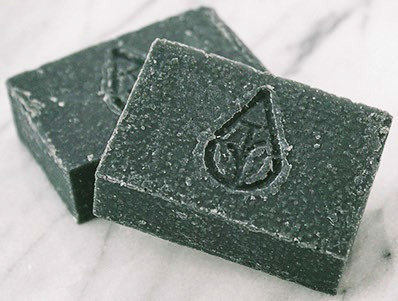It takes discipline, research and planning to translate zero waste and being eco-friendly into your daily beauty practices. Three women tell us how they do it.



She makes her own chemical-free skincare and goes zero-waste
Jacqueline Wong, 35, people science consultant and founder of online sustainable store The Clean Attempt
“My eco journey began when I saw an advertisement that said every plastic toothbrush ever created is still around today. After endless research, it became my personal quest to lead a zero-waste lifestyle.
I started an Instagram account to document my zero-waste journey. Friends started asking me to make products for them (like biodegradable toothbrushes) and it became clear that there were many people trying to go green – they just didn’t know where to find the right products. That was how I started The Clean Attempt.
Because going zero waste often overlaps with green beauty, it wasn’t long before I started using natural, toxin-free products. My skin is quite problem-free, but the fact that it stayed that way after the switch gave me confidence that the chemicals in commercial products are unnecessary. I can’t count the number of times people have told me they ‘need’ those chemicals or else ‘it doesn’t work’.
Now, my beauty routine is as simple as I can make it. It lessens waste and is a lighter lifestyle.
I remove my makeup with just water and The Clean Attempt’s Make-Up Removal Towel, then I wash my face with one of the brand’s facial bars. Occasionally, I use apple cider vinegar as a toner. I hand-make my brand’s Facial Mask & Scrub using natural essential oils and butters. And once or twice a week, I use my homemade coffee scrub on my body and face.
I try to make my own products wherever possible so I know exactly what goes on my skin. If I have to buy, I make sure to go through the ingredient list and steer clear of the Dirty Dozen (such as tar and petroleum-based ingredients).”


She supports small eco beauty brands and buys all-natural products
Yumika Hoskin, 30, TV host and entrepreneur
“I’m a big advocate of environmental protection and run my own sustainable business, Peco Bag – shopping carriers made from recycled plastic bottles. So sustainability is interwoven through many facets of my life, including beauty, although I’m not 100 per cent green yet.
I love smaller eco-friendly brands, such as local company Love From Yours, or those making the shift towards making sustainable vegan products.
I stick to skincare with natural ingredients: my Drunk Elephant cleanser and a plant-based serum from vegan brand Kumuya. After trying a few allnatural deodorants, I finally found one called Thai Crystal Deodorant made only of mineral salts.
Recycling is another thing I look out for. In the UK, Bybi gives its customers there return labels to mail their empty containers back for sterilisation and reuse. I also refill my shampoos and conditioners at package-free stores like The Social Space and Scoop Wholefoods.
When brands approach me for product placement on my Instagram, it’s a battle between embracing my green principles and losing income. I want to promote products I truly believe in and who display environmental responsibility, such as La Mer, with its Blue Heart Ocean Conservation initiative.

1. Drunk Elephant Slaai MakeupMelting Butter Cleanser, $50, is irritant-free.
2. La Mer Blue Heart Creme de La Mer, $780, supports the protection of marine habitats.

She goes for bigger bottles, or minimal and plastic-free packaging
Joanna Lai, 34, founder of marketing consultancy The Very Green Company
“In 2018, after seeing the famous video of a turtle with a plastic straw up its nose, I started a website, thegreenspot.org, to raise awareness about zero-waste practices and climate change. The site is a reminder of my role as a consumer, and a journal of lifestyle changes I adopt to reduce over-consumption and waste.
When choosing beauty products, I consider whether the ingredients are natural and ethically sourced. Minimal packaging, like soap and shampoo bars, is best. Next, would be non-plastic, recyclable or eco-friendly packaging.
I use Dermalogica’s face wash as it comes in a huge 500ml bottle so I don’t have to use more plastic bottles by replenishing it so often. I also reuse or recycle the bottle after. I haven’t used a store-bought makeup remover since 2018; I make my own using olive, coconut and essential oils. I’ve been using locally made body soaps from Rough Beauty for a while now.
Recently, I found an organic brand called True Botanicals and now use its moisturiser, mask, shampoo and conditioner. I’ve stopped buying sheet masks because of excessive packaging. For sunscreen, I use a reef-safe one from US brand Raw Elements.
There is no lack of options as many brands now are committed to sustainability. You just need to spend a little time to research which ones truly believe in the cause and weed out those that use eco-friendliness as a marketing message, though that’s probably the hardest bit.

1&2. The handmade Rough Beauty Bar Soaps, $9.50 each, uses sustainable palm oil. They’re handmade in small batches to reduce wastage.
3. Simple, natural ingredients like olive oil + essential oils can be used to make makeup remover.
TEXT GOH YEE HUAY PHOTOS 123RF























